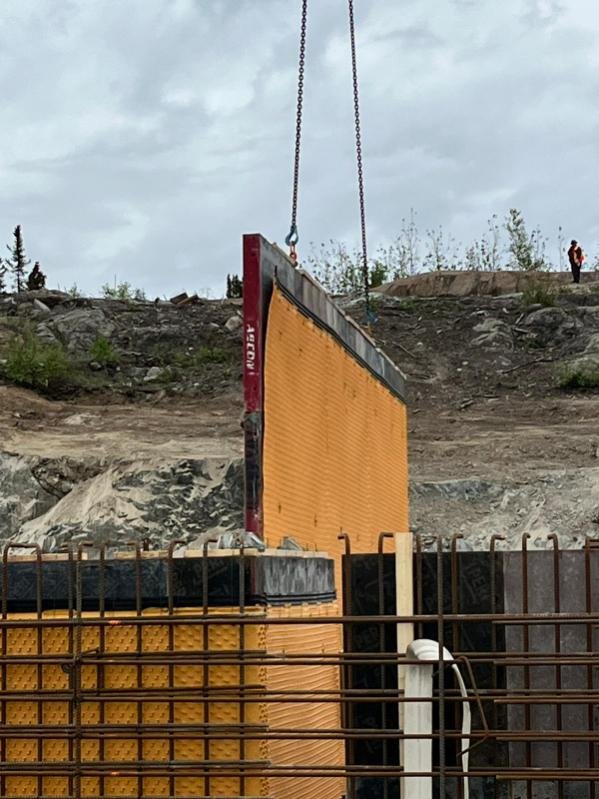The Role of Concrete Protection Liners in Environmental Protection
Concrete protection liners play a crucial role in protecting our environment and infrastructure. These liners serve as a barrier, shielding structures from harmful substances and ensuring the longevity of our building projects. Whether in water treatment plants, chemical factories, or sewage systems, they keep hazardous materials from leaking into the ground and contaminating our natural resources.
These liners are crafted from durable materials that offer various benefits. From preventing soil erosion to safeguarding groundwater, they contribute significantly to environmental protection. Using concrete protection liners can avoid potential disasters caused by leaks and spills, protecting both people and the planet.
As technology evolves, so do the materials used in concrete protection liners. New advancements allow these liners to perform better and last longer. Understanding these developments helps us appreciate how they contribute to more sustainable and safer infrastructure projects. In this article, we will explore what these liners are, their environmental advantages, their main benefits, and the latest innovations shaping their future.
Understanding Concrete Protection Liners
Concrete protection liners are essential components in constructing and maintaining durable infrastructure. They act as protective barriers, shielding concrete from various forms of damage. These liners are commonly made from materials like high-density polyethylene (HDPE), polyvinyl chloride (PVC), and other advanced polymers. These materials are chosen for their durability, flexibility, and resistance to chemicals and environmental wear.
The primary function of concrete protection liners is to protect concrete structures from physical, chemical, and environmental damage. With these liners in place, concrete surfaces are less likely to crack, corrode, or deteriorate over time. This makes them crucial for projects that require long-lasting, robust constructions. Whether it’s a wastewater treatment plant, a chemical containment facility, or any other structure exposed to harsh conditions, concrete protection liners ensure that the integrity of the concrete is maintained.
How Concrete Protection Liners Safeguard the Environment
Concrete protection liners play a crucial role in preventing environmental contamination. By acting as impermeable barriers, they stop harmful substances from seeping through concrete structures and contaminating the soil and groundwater. This is especially important in facilities that handle hazardous materials, such as industrial plants or waste storage sites. The liners ensure that dangerous chemicals and pollutants remain contained within the designated areas, protecting the surrounding environments.
One major benefit of using concrete protection liners is their ability to protect groundwater and soil. When harmful liquids or chemicals leak from a concrete structure, they can cause significant environmental damage. These contaminants can pollute local water sources, making them unsafe for consumption and harming aquatic ecosystems. By using concrete protection liners, we can significantly reduce the risk of such leaks, ensuring cleaner and safer environments for everyone. Liners also help mitigate the impact of accidental spills, providing an added layer of security against environmental hazards.
Top Benefits of Using Concrete Protection Liners
Concrete protection liners offer numerous environmental and structural benefits. These liners significantly extend the lifespan of concrete structures, reducing the need for frequent repairs and replacements. This is especially valuable for large-scale infrastructure projects. By providing a robust barrier against physical and chemical damage, liners prevent surface degradation and maintain structural integrity for a longer period. This leads to lower maintenance costs and less disruption due to repair work.
There are many practical applications for these liners. They are widely used in wastewater treatment facilities, storage tanks, chemical plants, and other industrial settings. In each of these applications, the liners help mitigate risks associated with leaks and spills, ensuring the safe containment of hazardous substances. Long-term, concrete protection liners contribute to environmental sustainability by reducing the ecological footprint of infrastructure projects. By preventing leaks and contamination, they help maintain cleaner environments, protecting wildlife and human health alike.
As we move towards a future with more sustainable and advanced materials, the role of concrete protection liners will only grow in significance. For those seeking reliable and effective containment solutions, Engineered Containment offers unparalleled expertise and cutting-edge technology to meet your needs. Trust us for the best in concrete protection and environmental safety.




